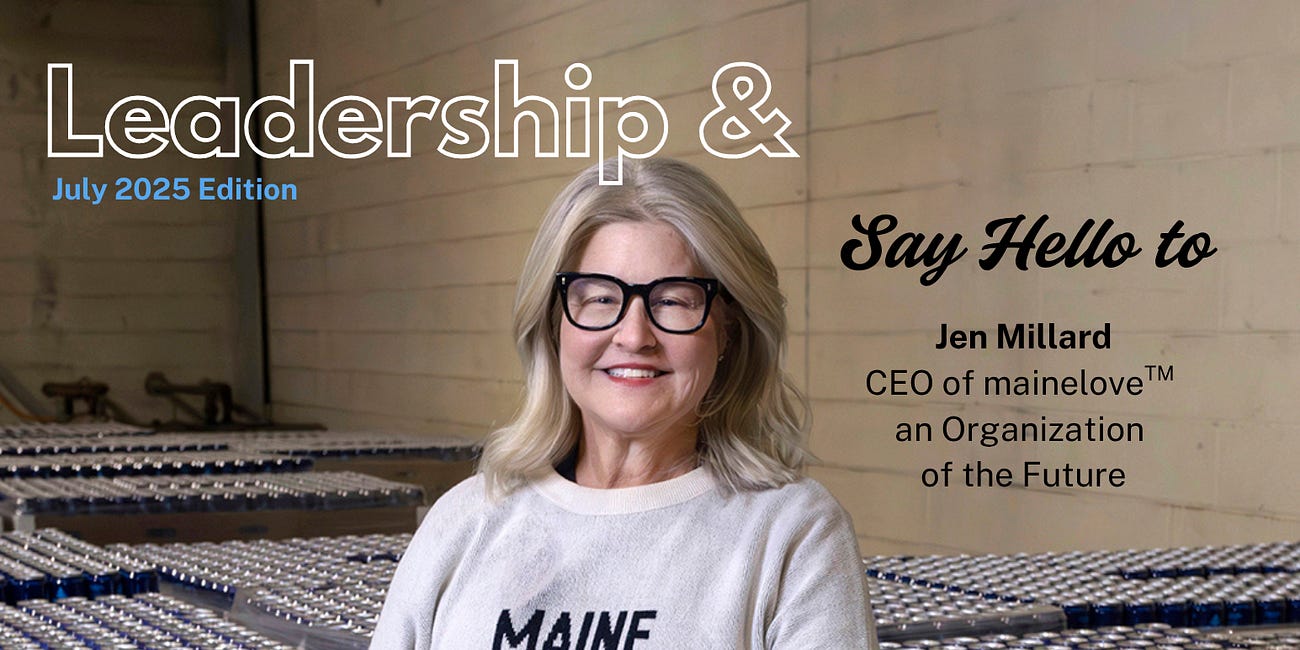Supporting the Leaders of the Future
Are We Building Organizations That Can Hold Them?
This article is a part of the monthly July edition of Leadership &. View full version below:
We often talk about how to develop great leaders. But what happens when great leaders are placed in systems that simply weren’t built to support them?
In an era of constant change, emerging leaders—across all generations—are stepping up with bold ideas, adaptable mindsets, and a deep desire to create impact. They’re not waiting for promotions or titles to make a difference. They are navigating ambiguity, pushing for purpose, and redefining leadership itself.
But here’s the challenge: many of today’s organizations are still structured for yesterday’s world.
As Andrea Caldwell, Vice President of Consulting and Coaching at FranklinCovey, explains:
“Organizations are evolving to meet the expectations of future leaders by shifting from rigid hierarchies to more agile, skills-based structures that enable growth and flexibility.”
This evolution isn’t a trend. It’s a necessity. And it starts with a simple but profound question: Are we building organizations that support the leaders we’re working so hard to develop?
From Command and Control to Flex and Flow
For decades, leadership was built on hierarchy, chain of command, and time-in-seat. But the leaders stepping forward today—whether they’re 28 or 48—are fueled by autonomy, real-time learning, and the ability to make meaningful contributions.
The traditional model doesn’t fit anymore.
Future-ready organizations are shifting toward agile, skills-based structures that prioritize:
Decentralized decision-making, so leaders at all levels can act with confidence and speed
Cross-functional, project-based work, which encourages collaboration and continuous learning
A focus on competencies over job titles, recognizing what people can do versus where they sit in a chart
This shift supports not only how people want to work—but how leadership actually happens: adaptively, in real time, and often without permission.
It’s not about flattening org charts. It’s about unlocking leadership wherever it lives.
Culture as Infrastructure, Not Atmosphere
Leadership thrives—or withers—based on the culture surrounding it.
And that culture must be intentionally designed, not left to chance.
Caldwell shares:
“Cultures are being intentionally designed to foster inclusion, purpose, and psychological safety. This is critical to attract and retain next-gen talent.”
But this doesn’t just apply to Gen Z. Mid-career professionals are also demanding workplaces that align with their values. Culture isn’t a backdrop—it’s the infrastructure leaders lean on when making tough calls, taking risks, or navigating change.
What future leaders need from culture:
Inclusion: Environments where everyone’s perspective is welcomed and heard
Purpose: A clear connection between the organization’s mission and the individual’s contribution
Psychological safety: A climate where questions are encouraged, mistakes are learning opportunities, and vulnerability isn’t a weakness
The best leadership development strategy? A culture that allows people to show up fully and lead bravely.
Building Bridges, Not Barriers
L’Taundra Everhart, M.Ed., a national education expert and emotional wellness strategist, offers a powerful reminder: future leadership doesn’t belong to one age group.
“I see a growing gap between those just entering the workforce and those in the later stages of their careers. But when their skills, efforts, and goals are aligned, the collaboration can be remarkable.”
Supporting leaders of the future means designing systems that encourage intergenerational collaboration, instead of pitting experience against innovation.
Everhart also challenges organizations to be honest about expectations:
“Organizations need employees who can produce meaningful results. Employees, in turn, seek purposeful work, fair compensation, and clearly defined benefits. Neither side can thrive without structure.”
That structure isn’t about micromanagement—it’s about clarity: clear roles, transparent expectations, and shared definitions of success.
Great leadership doesn’t emerge from chaos. It grows when people know where they stand—and where they’re going.
From Perks to Wellness Ecosystems
Support for leaders isn’t just professional—it’s personal.
Many are burned out before they even step into formal leadership roles. Everhart calls for a reimagining of how we care for the people we ask to lead:
“Radical shifts in workplace culture and leadership thinking are no longer optional. Wellness ecosystems must be structural, intentional systems built to support the whole person—not just the job title.”
Her shift from offering quick fixes to building long-term, human-centered support systems reflects the future of sustainable leadership.
What this looks like:
Well-being embedded into team norms and leadership expectations
Coaching, flexibility, and equity in workload and recognition
Environments that foster resilience, not just output
If we want courageous, creative leaders, we need workplaces that help them stay well enough to lead.
Learning That Looks Like Leading
Leadership development isn’t confined to the classroom anymore. It’s lived, hands-on, and evolving.
Caldwell explains:
“Career development is becoming more dynamic and personalized, emphasizing experiences that build both leadership capability and reinforce their ability to navigate uncertainty and complexity.”
That means organizations must offer:
Stretch assignments that build leadership muscle
Individualized growth journeys, not one-size-fits-all tracks
Real-time coaching, not just annual feedback
Skill-building for ambiguity, not just tasks
Leaders don’t need to be taught how to lead from a textbook. They need space to grow into the complexity of leadership in motion.
Invest Early. Show Up Often.
Caldwell closes with a key insight:
“Organizations that are visibly innovative and growing will make themselves more attractive to future leaders. People want to grow with companies that are growing too.”
To send that message clearly:
Offer targeted, early career development
Celebrate internal promotions and growth
Showcase real innovation, not just marketing slogans
Make the path to impact visible
The message is simple but powerful: “We see you. We believe in you. Let’s grow together.”
A Big Thank You to Our Contributors:
Andrea Caldwell, FranklinCovey
L’Taundra Everhart, M.Ed., BYG! Mixed Greens For The Soul


